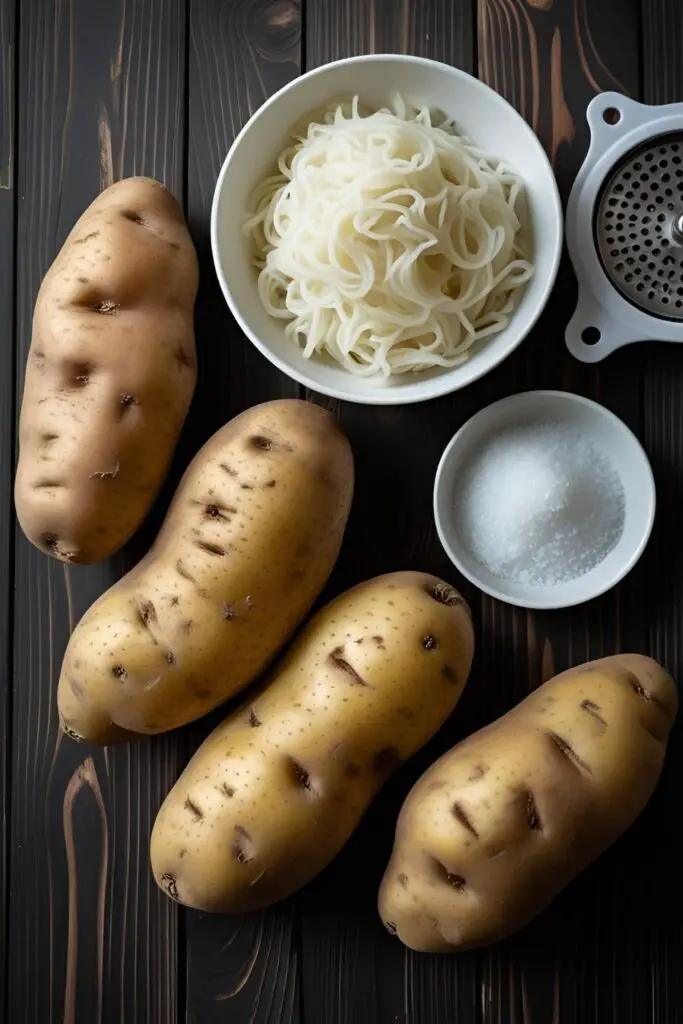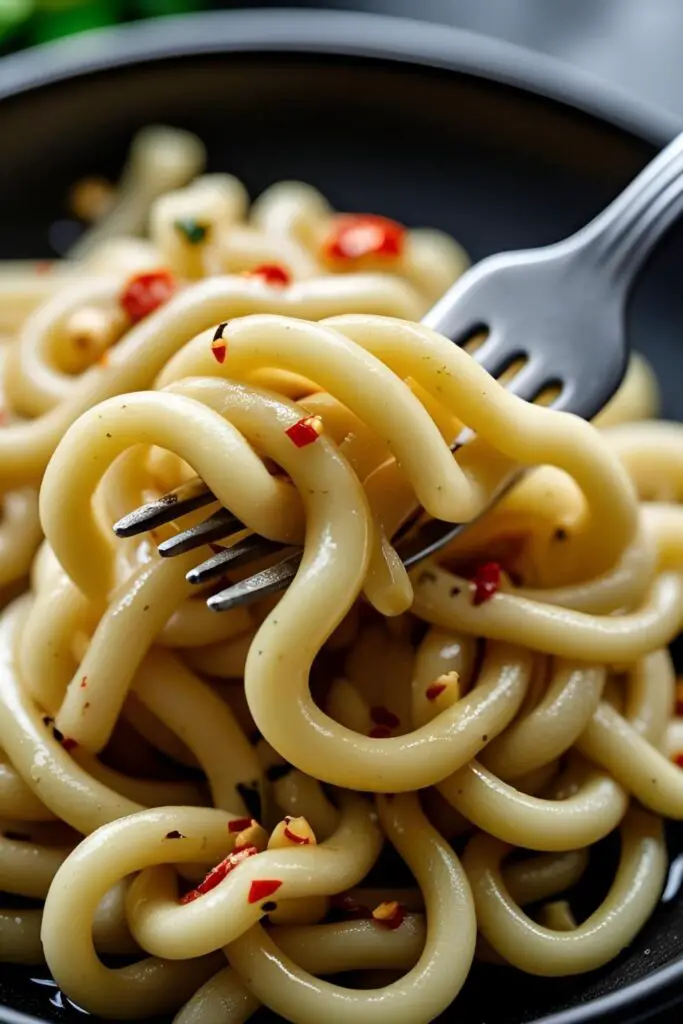Ditch the Box: How to Make Potato Noodles From Scratch (It’s Easier Than You Think!)
Ever find yourself in a culinary standoff, staring into your pantry, torn between your love for potatoes and your craving for noodles? It’s a classic carb-lover’s dilemma. But what if I told you that you don’t have to choose? What if you could combine these two glorious comfort foods into one chewy, satisfying, and ridiculously fun dish? Get ready, because today we’re diving into how to make potato noodles. Yes, you read that right. We’re turning humble spuds into pasta.
Why This Recipe Is Basically Magic
So, why should you bother turning a perfectly good potato into a noodle? First off, the texture is incredible. Imagine the love child of a fluffy gnocchi and a chewy Japanese udon noodle. They have a bouncy, slightly springy bite that is wildly addictive and soaks up sauce like a dream.
Second, it’s naturally gluten-free and vegan! This makes it a total crowd-pleaser for friends with dietary restrictions. And honestly, the bragging rights are off the charts. Casually dropping “Oh, these noodles? I made them from scratch… with potatoes” at your next dinner party? You’ll instantly become a culinary legend. TBH, it’s worth it for that moment alone.
Ingredients
The shopping list for this adventure is beautifully short. No weird, hard-to-find ingredients here!
- 2 lbs (about 900g) Russet potatoes: These starchy spuds are the star of the show. Do not substitute with waxy potatoes like red or Yukon Gold unless you enjoy the texture of wallpaper paste.
- 1 cup (about 120g) potato starch: This is the magic binder that gives our noodles their signature chew. You can find it in most grocery stores, often in the gluten-free or international aisle.
- 1 teaspoon salt: For flavor, obviously.
- Water: For boiling our potato pals and our finished noodles.
Tools & Kitchen Gadgets Used
Having the right gear makes this process a breeze. Here’s what you’ll want to have on hand:
- Large pot: For boiling the potatoes and then the noodles.
- Potato ricer or food mill: This is the non-negotiable hero gadget for this recipe. It creates the light, fluffy potato texture you need, free of lumps.
- Large mixing bowl: To bring the dough together.
- Bench scraper or knife: For cutting the dough into perfect little noodle pieces.
- Slotted spoon or spider strainer: For safely rescuing your cooked noodles from their hot water bath.
- A second large bowl (for an ice bath): Crucial for the final step!
Step-by-Step Instructions
Alright, let’s turn some spuds into slurpable sensations. Take a deep breath. You got this.
- Cook the Potatoes: Place your whole, unpeeled potatoes in a large pot and cover them with cold water. Bring to a boil and cook until they are extremely tender—a knife should slide in with zero resistance. Think “overcooked,” not just “cooked.”
- The Hot Potato Dance: Once tender, drain the potatoes. Now, working carefully while they are still very hot, peel the skins off. The skin should slide right off. Use a fork or a clean kitchen towel to hold the hot potato so you don’t scorch your fingerprints off.
- Rice, Rice, Baby: Immediately press the hot, peeled potatoes through your potato ricer or food mill into a large mixing bowl. Doing this while they’re hot is key to getting a fluffy, light texture. If you wait, they get gummy.
- Form the Dough: Sprinkle the potato starch and salt over the riced potatoes. Using your hands or a fork, gently mix until a shaggy dough starts to form. It will be soft and pliable. Do not overmix or knead it like bread dough! You’ll develop the gluten (just kidding, there is none) and make the noodles tough. Just mix until it comes together.
- Roll and Cut: Lightly dust your work surface with a bit of potato starch. Take a portion of the dough and gently roll it into a long rope, about ½-inch thick. Use a bench scraper or knife to cut the rope into 1- to 2-inch long noodle segments. Repeat with the remaining dough. Aren’t they cute?
- Take a Swim: Bring a large pot of salted water to a rolling boil. Gently drop the potato noodles into the water in batches. Don’t overcrowd the pot!
- They Float!: The noodles will sink to the bottom at first. After a few minutes (usually 2-3), they will float to the surface. Let them cook for another 30-60 seconds once they float, then scoop them out with a slotted spoon.
- The Big Chill: Immediately transfer the cooked noodles into a large bowl of ice water. This “shocking” step stops the cooking process and is crucial for achieving that perfect chewy texture. Let them chill for a minute before draining.
Calories & Nutritional Info
Here’s a rough estimate per serving (assuming the recipe makes 4 servings). Remember, this is just a guide!
- Calories: Approximately 350-400 kcal
- Carbohydrates: 80-90g
- Protein: 5-7g
- Fat: < 1g
- Fiber: 6-8g
- Keynotes: These noodles are naturally gluten-free, dairy-free, and vegan. They are a great source of complex carbohydrates and potassium.
Common Mistakes to Avoid
Save yourself the heartache. Please don’t do these things.
- Using Waxy Potatoes: I know I said it before, but it bears repeating. Using red or Yukon Gold potatoes will result in a gummy, sticky mess. Stick to starchy Russets!
- Mashing Instead of Ricing: A regular masher won’t cut it. It will overwork the potatoes and create a gluey texture. A ricer is your best friend for creating a light, lump-free base.
- Letting the Potatoes Cool Down: You must rice the potatoes while they are steaming hot. As they cool, the starches retrograde and become gummy. It’s science, people.
- Overworking the Dough: Treat this dough with respect. Gently mix until just combined. If you knead it, you’ll end up with dense, tough noodles instead of light, chewy ones.
- Skipping the Ice Bath: Tossing hot noodles straight into a sauce will make them mushy and they might stick together. The ice bath is a non-negotiable step for texture.
Variations & Customizations
Feeling adventurous? Good. Here are a few ways to level up your potato noodle game.
- Sweet Potato Noodles: Swap the Russets for sweet potatoes for a vibrant orange noodle with a hint of sweetness. You might need a little extra potato starch as sweet potatoes have higher moisture content.
- Spicy Gochujang Noodles: Mix a tablespoon of gochujang (Korean chili paste) into your dough when you add the starch. This gives the noodles a beautiful reddish hue and a fantastic spicy, umami kick.
- Herbed Potato Noodles: Finely chop some fresh, sturdy herbs like chives, rosemary, or parsley and mix them into the dough. This adds a wonderful layer of fresh flavor directly into the noodle.
FAQ Section
Let’s clear up some common questions you might be frantically typing into Google.
- What are potato noodles made of? They are made from just two main ingredients: potatoes (specifically starchy ones like Russets) and potato starch. Salt is added for flavor.
- Are potato noodles healthy? “Healthy” is subjective, but they are made from whole food ingredients and are a good source of energy-providing carbohydrates and potassium. They are also naturally gluten-free.
- Are potato starch noodles the same as glass noodles? Nope! While both use starch, potato noodles are made from the actual flesh of the potato, giving them a softer, gnocchi-like chew. Glass noodles (or cellophane noodles) are typically made from mung bean starch, sweet potato starch, or tapioca starch and have a more transparent, gelatinous texture.
- Can I make these without a potato ricer? You can, but I strongly advise against it. Your next best option is to push the cooked potato through a fine-mesh sieve with the back of a spoon. It’s a lot more work and might not be as fluffy, but it’s better than a regular masher.
- How do I store homemade potato noodles? It’s best to cook them fresh. However, you can lay the uncooked noodles on a baking sheet, freeze them solid, and then transfer them to a freezer bag. Cook them directly from frozen, adding a minute or two to the boiling time.
- What kind of sauce goes well with potato noodles? Almost anything! A simple browned butter and sage sauce is divine. They are also fantastic in a spicy stir-fry, a creamy mushroom sauce, or a simple chili garlic oil.
- Why are my potato noodles gummy? This is the number one issue. It’s almost always caused by one of three things: you used the wrong (waxy) type of potato, you let the potatoes cool before ricing them, or you overmixed the dough.
Final Thoughts
You did it. You took a humble, lumpy potato and transformed it into a bowl of chewy, glorious noodles. You’re basically a kitchen alchemist now. Go ahead and serve them up with your favorite sauce and bask in the glory of your creation. You’ll never look at that bag of spuds in your pantry the same way again. 🙂


